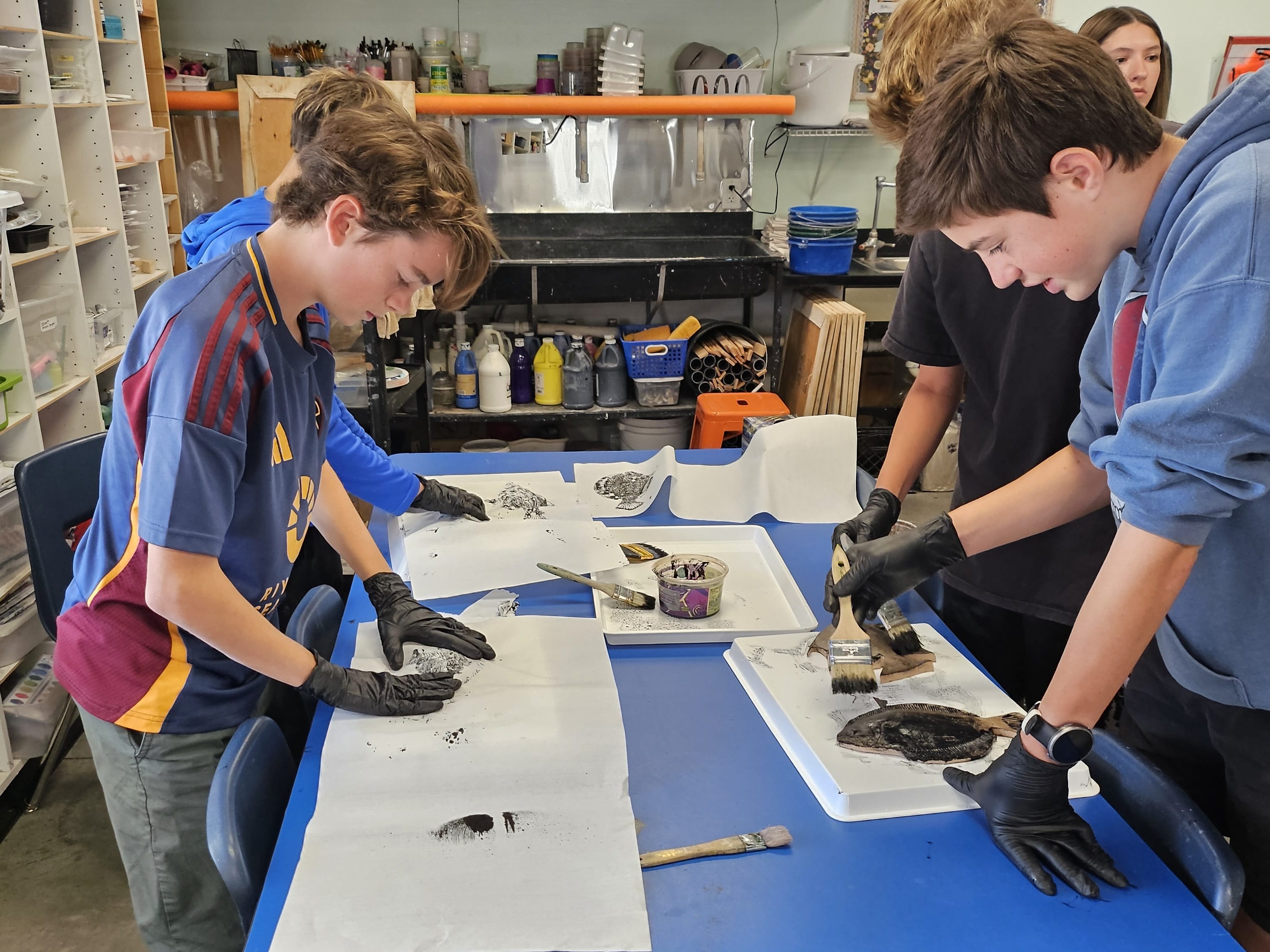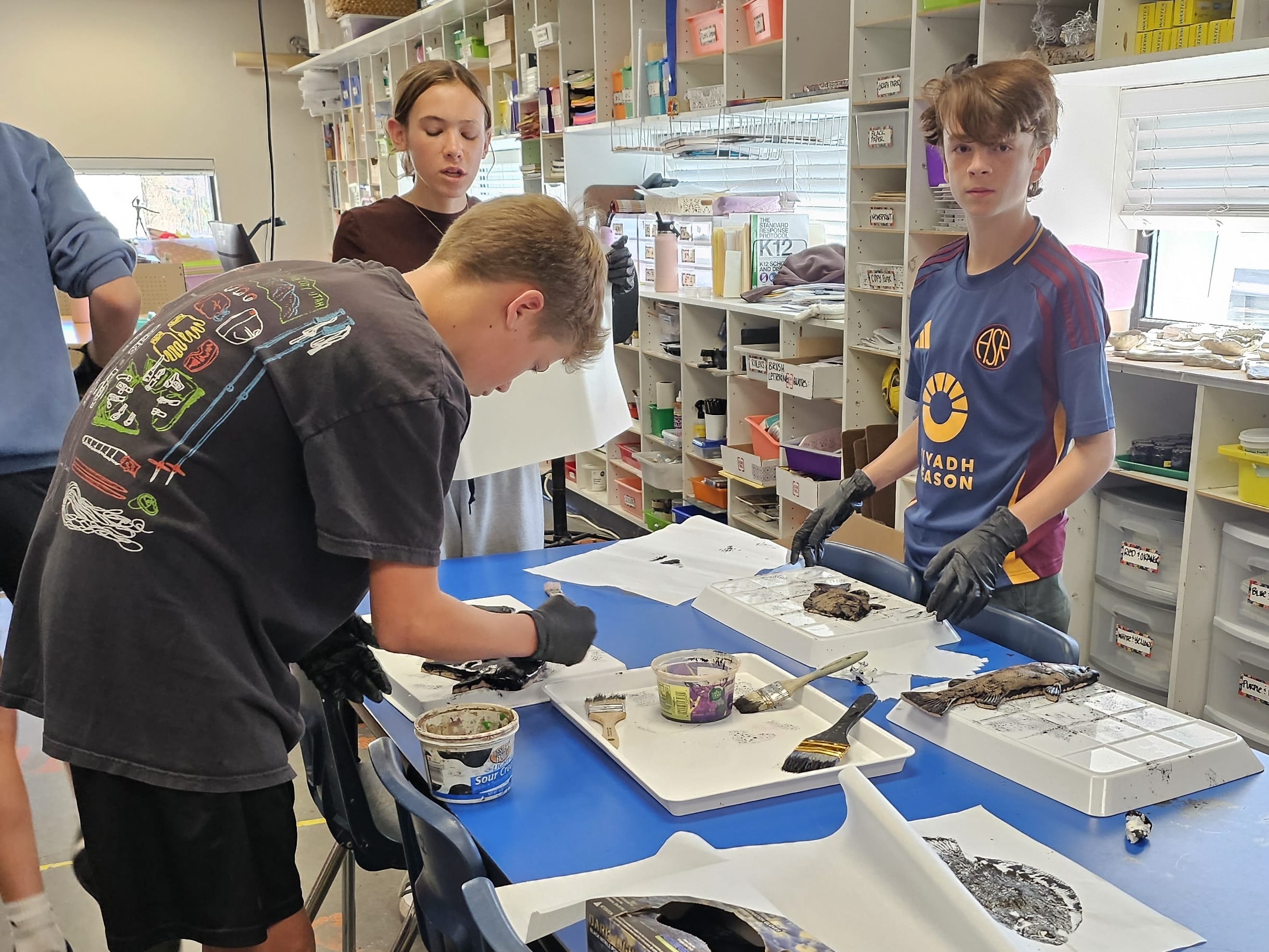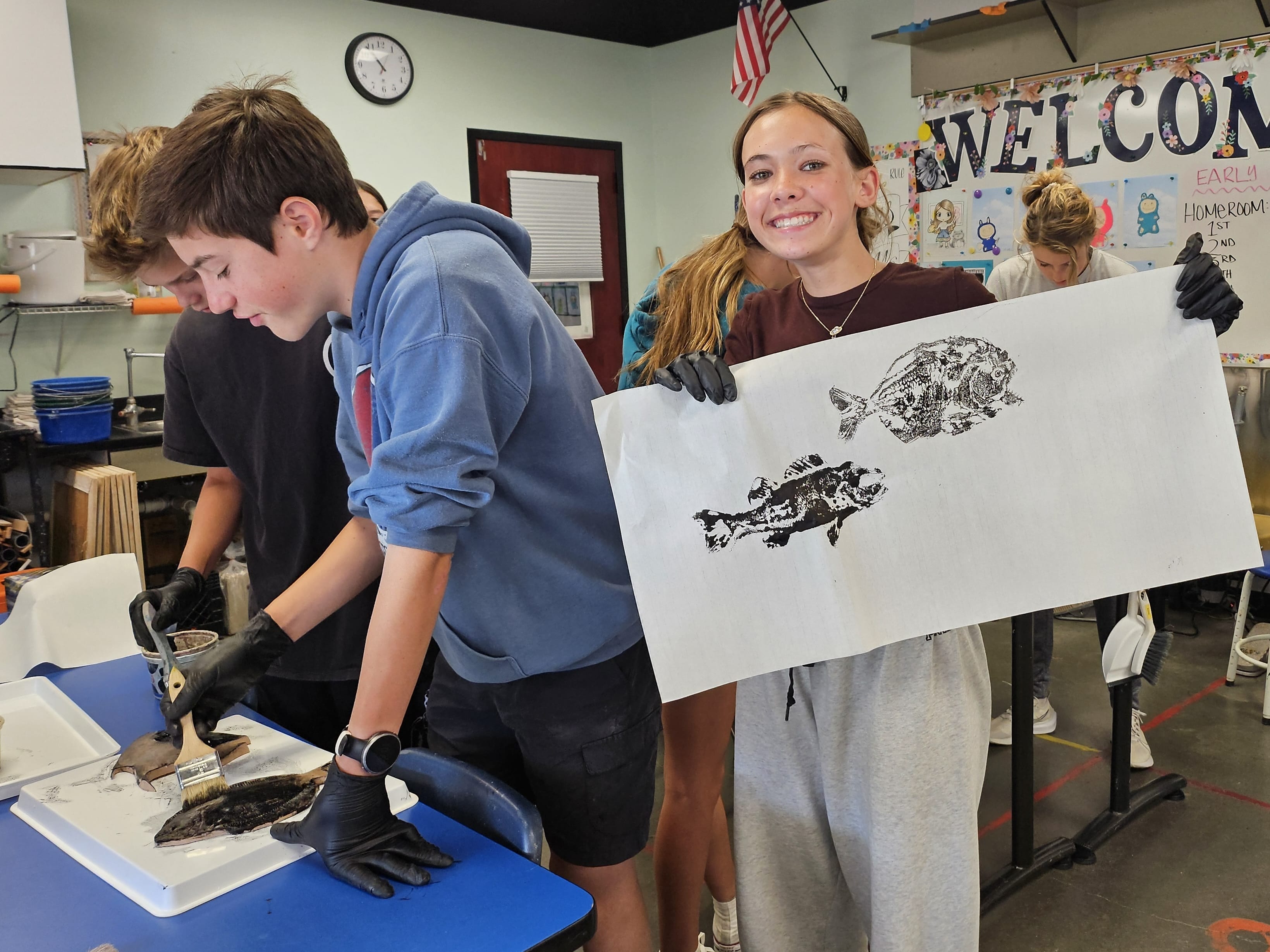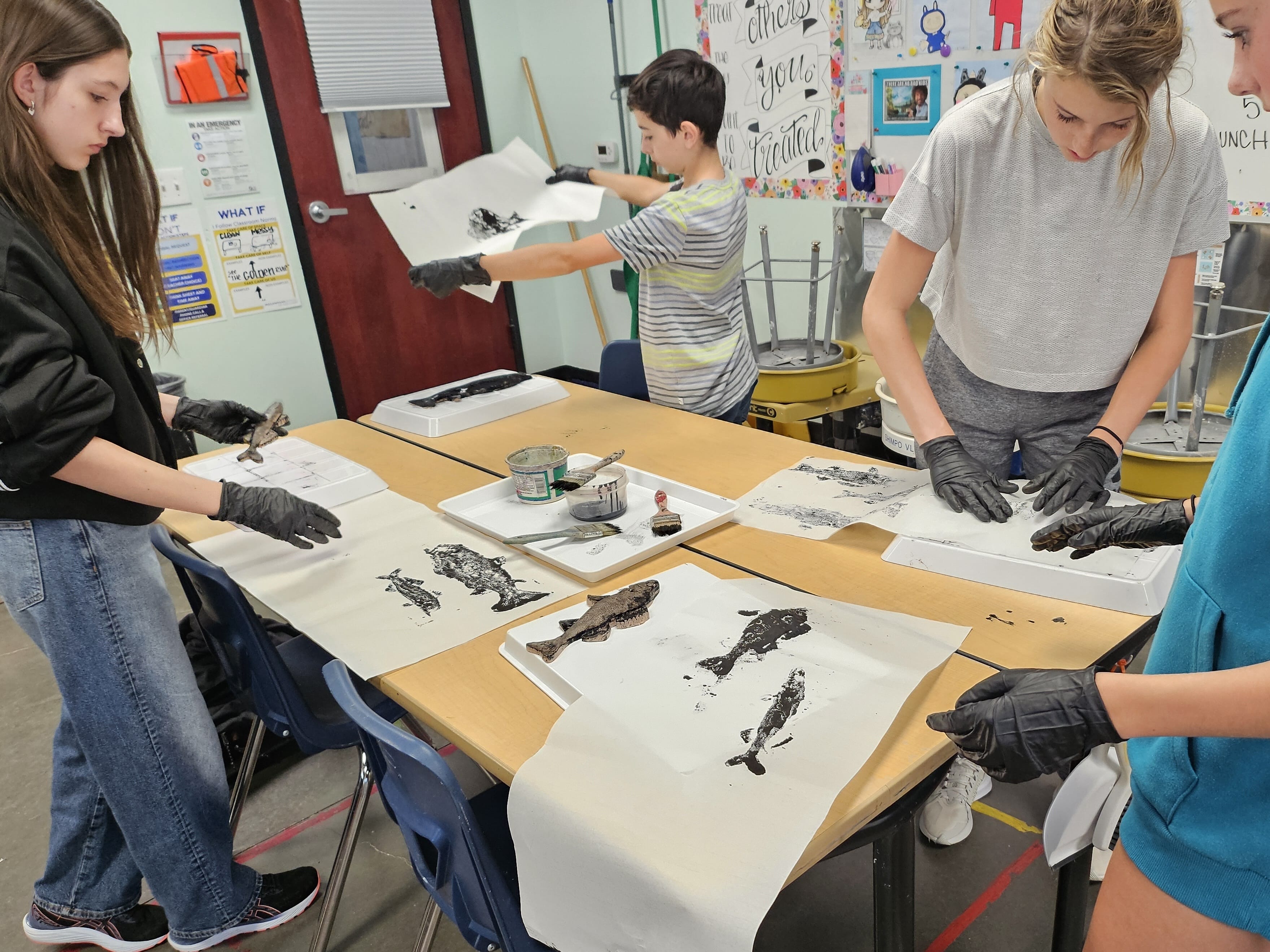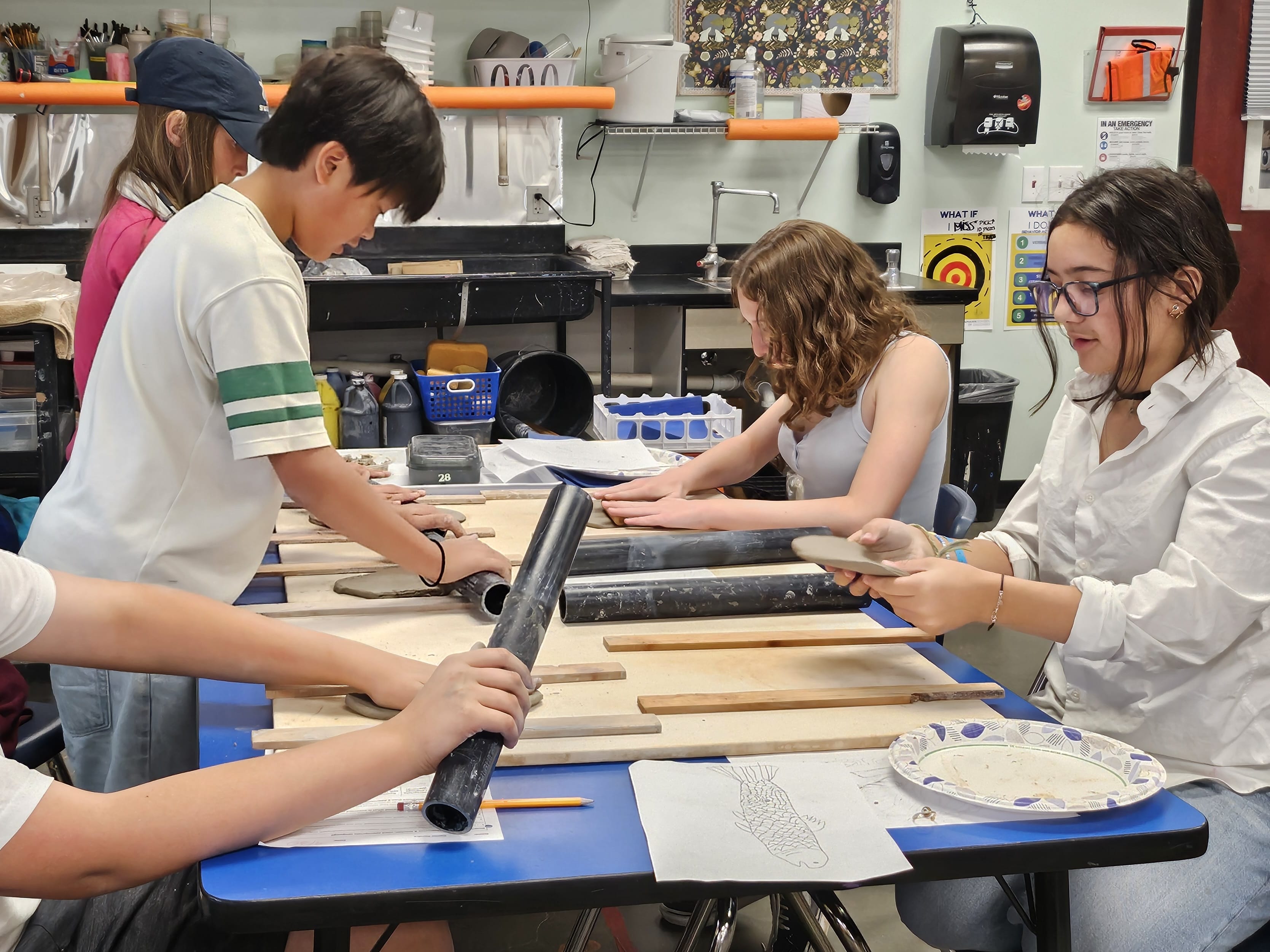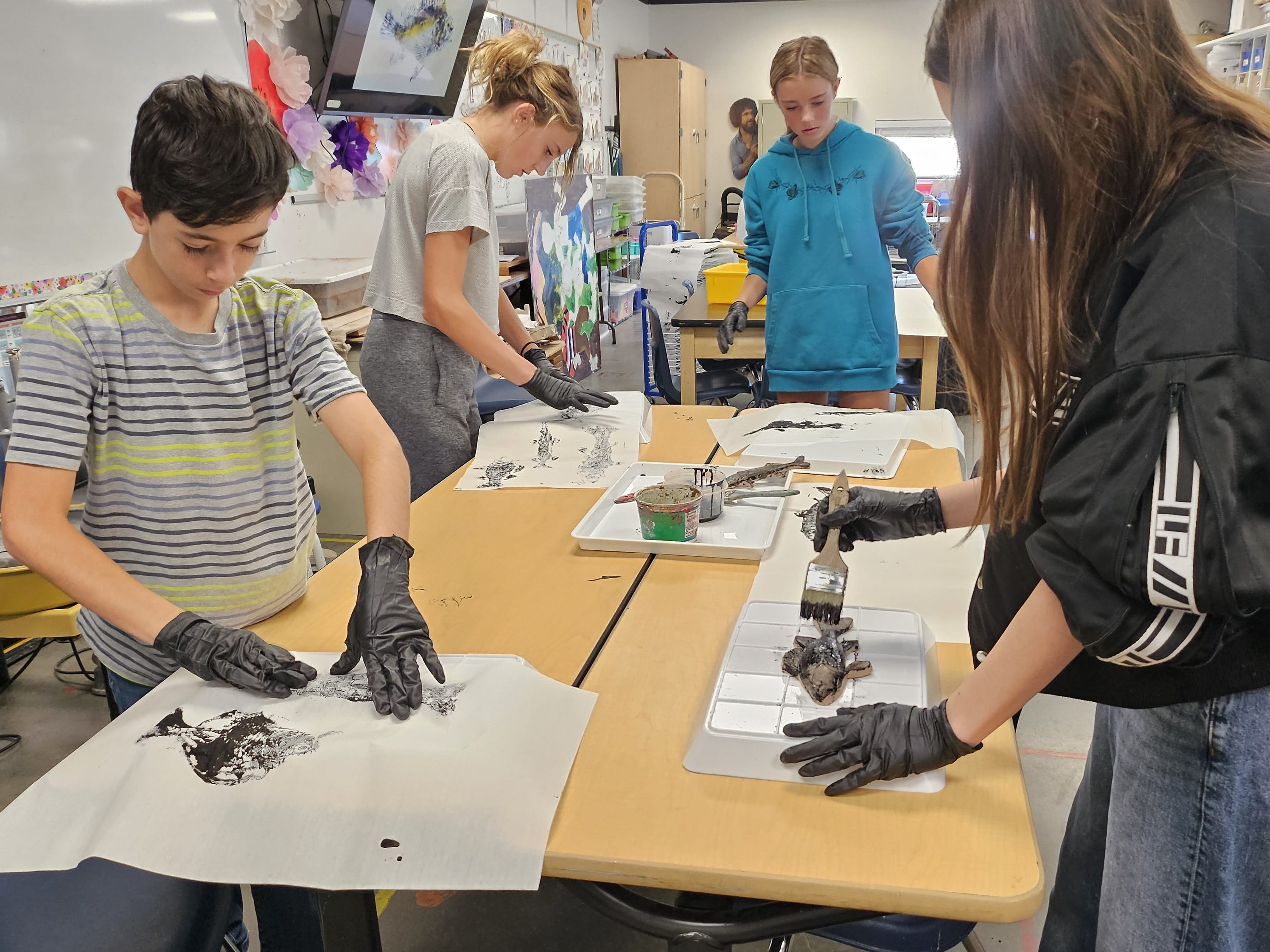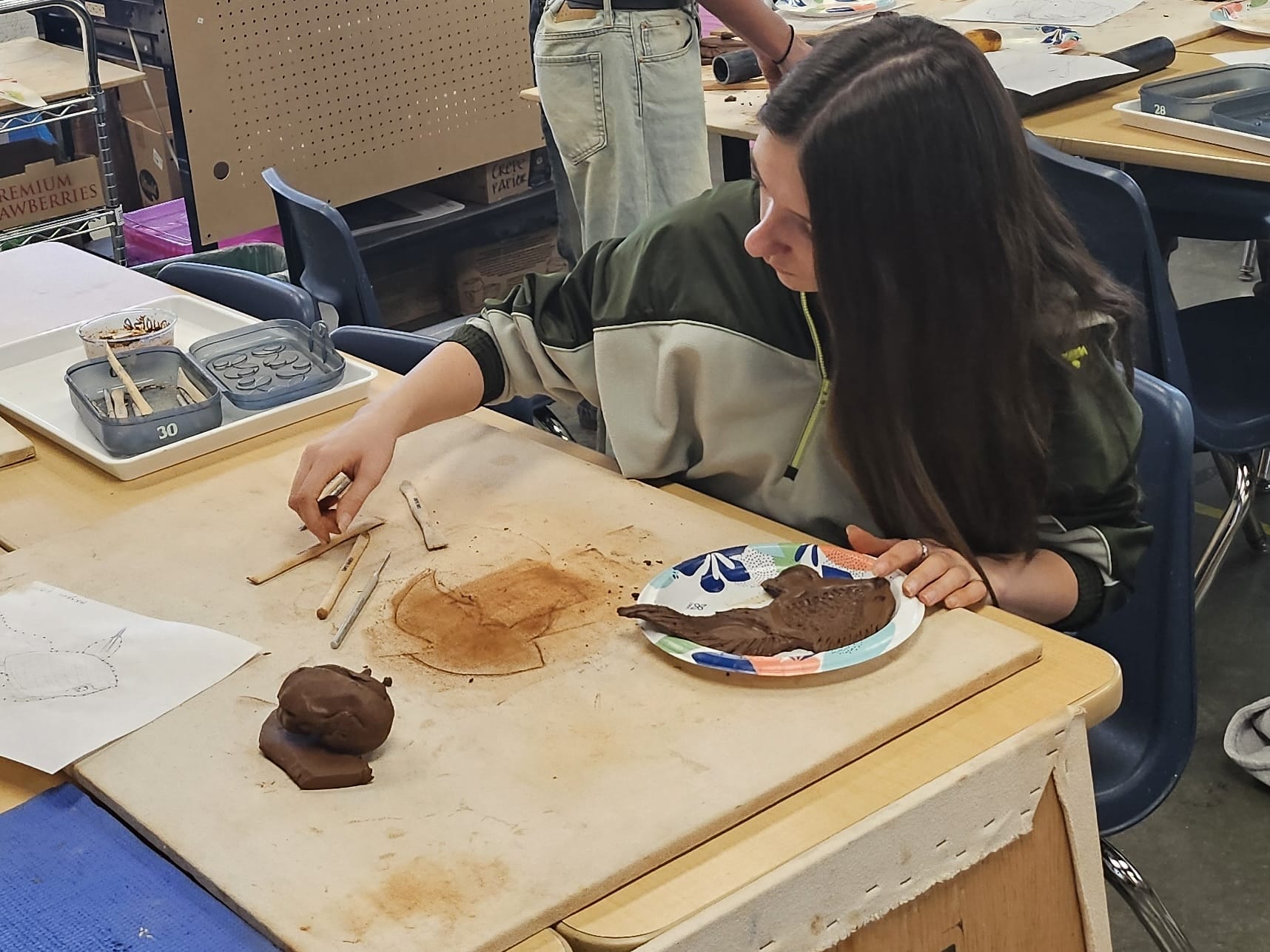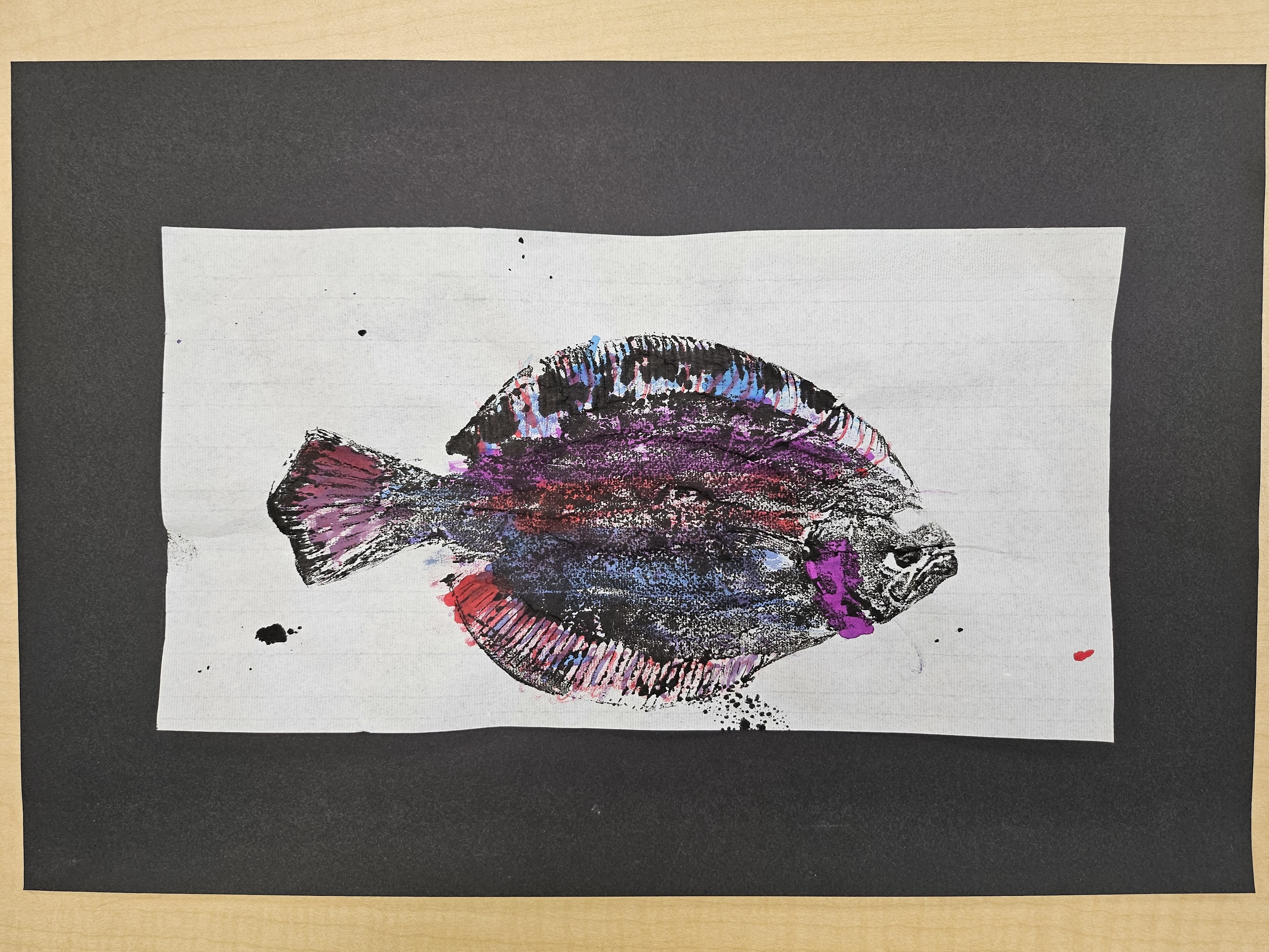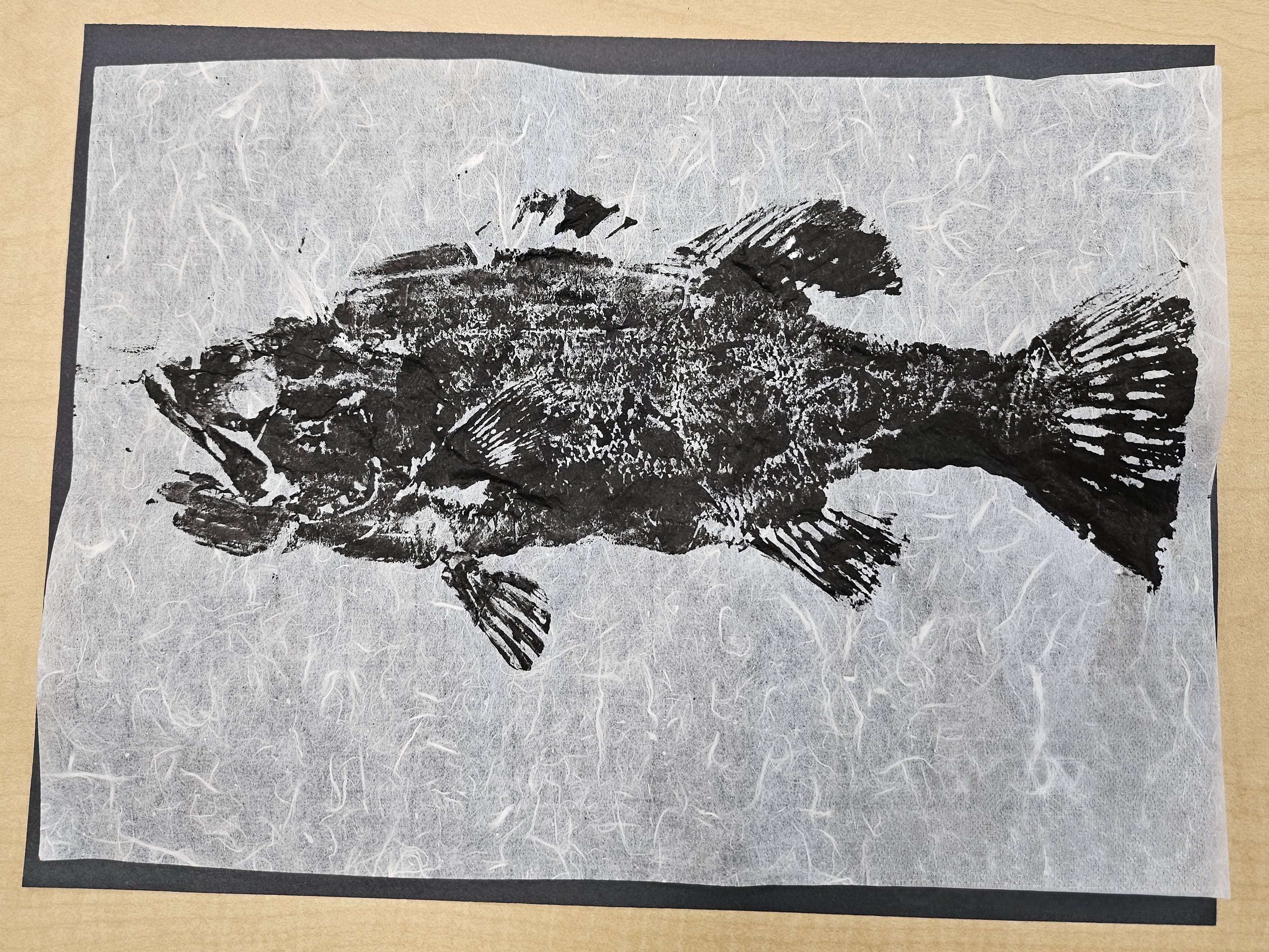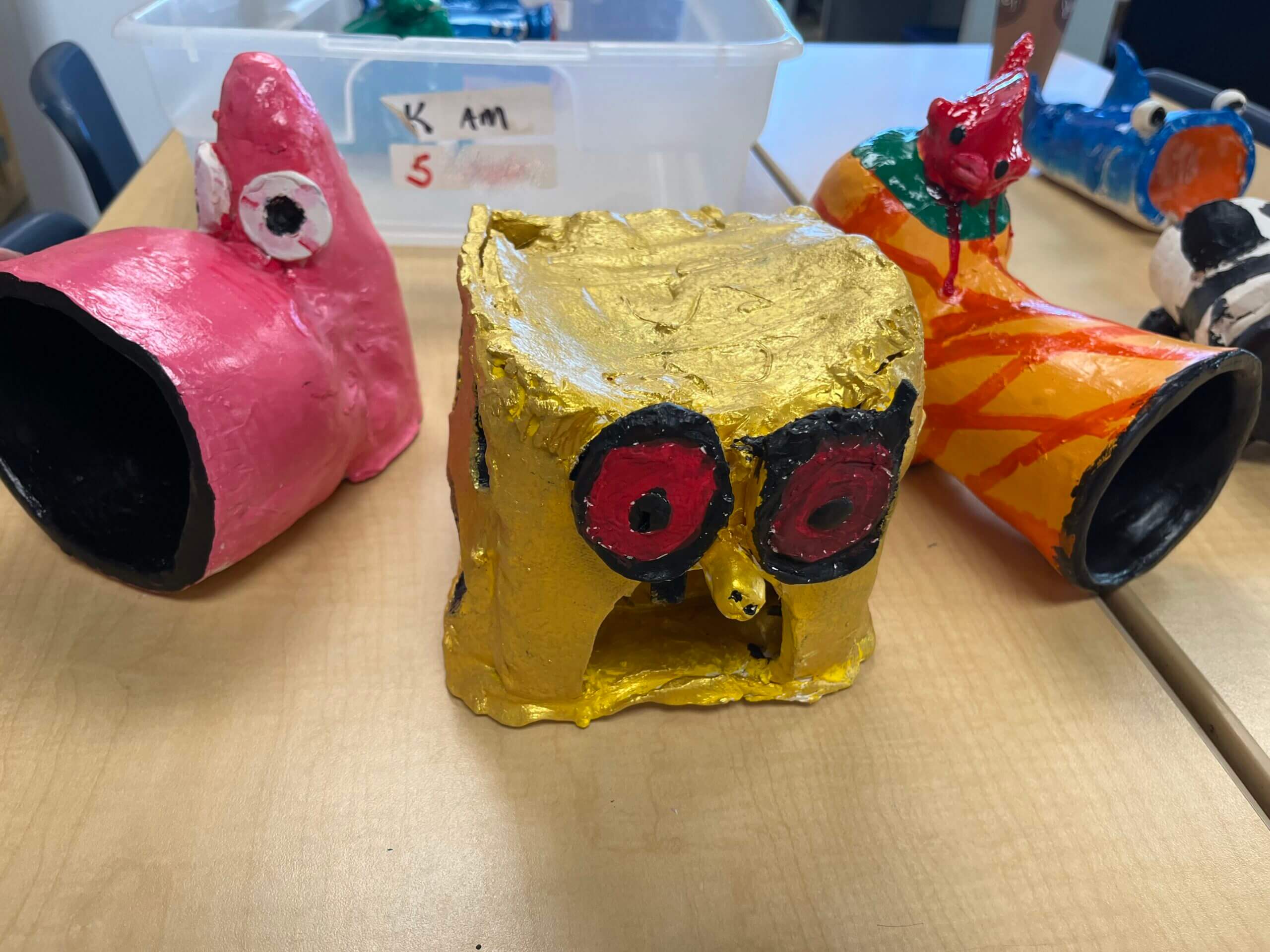Congratulations to Middle School Math Teacher, Jessica Hunsaker, who was recognized by the Utah State…
WSD eighth graders are learning a traditional Japanese printing technique called “gyotaku.” Invented by fishermen in the early 1800s, it was used both as a record of their catches and as an art form.
“Legend has it,” explains Art teacher Naomi Kohl, “one of Japan’s emperors required every fish he caught to be printed so no one could question his fish tales. And Samurai are said to have settled disputes over who caught the biggest fish using their gyotaku prints.”
Today, fishermen still use these techniques to keep accurate records of their catches.
Eighth graders are using the same traditional materials, minus the live fish! Instead, they are creating a clay fish as their printing plate, applying sumi-e ink to the surface, and transferring the impression carefully onto rice paper. The effect is a life-like print that students will continue to refine, layering colored ink for depth, texture, and anatomical coloration.
